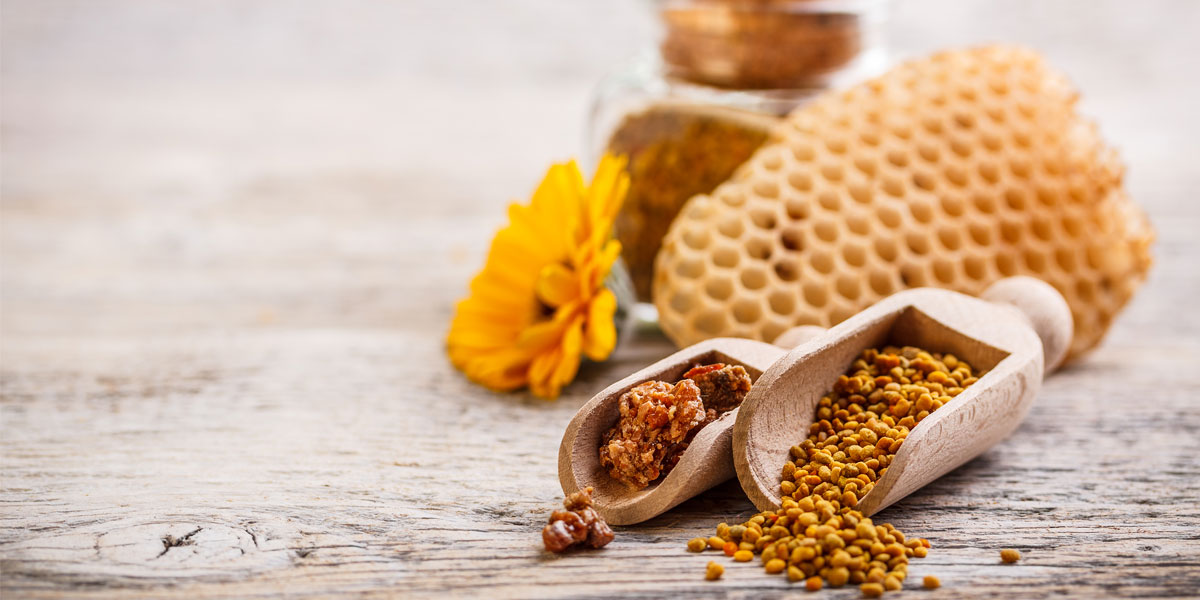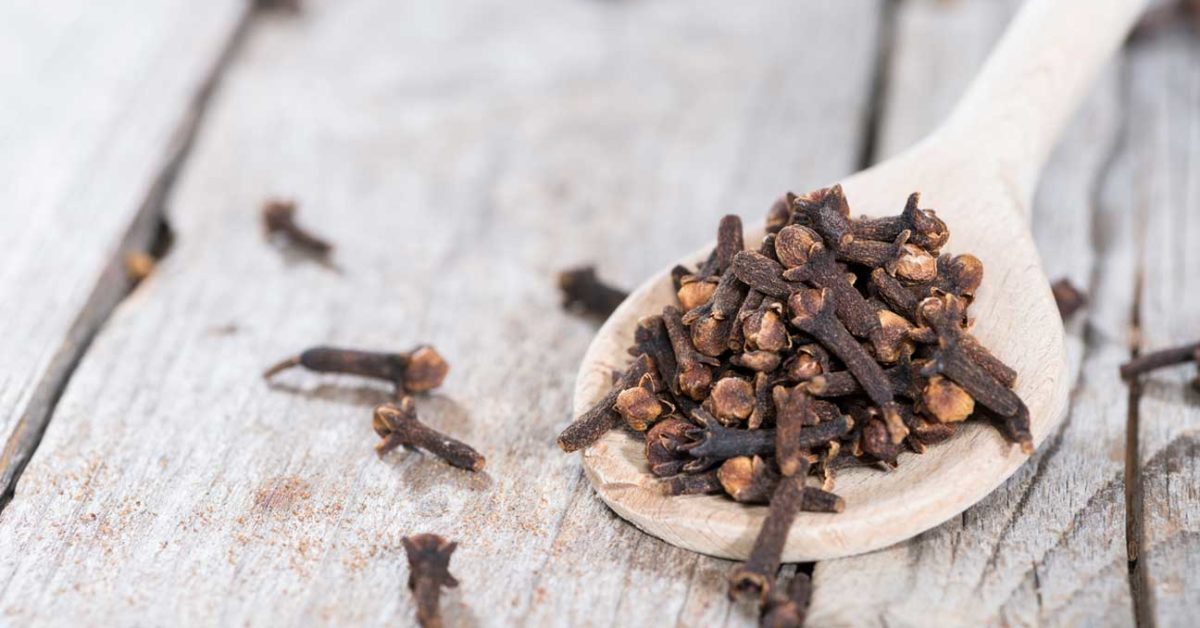Origin
A vast amount of people are not familiar with this substance at all, nor do they know it as a bee product. Asides from honey, which is the main bee product, propolis is one of bees’ side products next to bee venom, beeswax and royal jelly.
This product has a significant purpose in the bee society, which we will later see. The word propolis is of Greek origin, it is a combination of the two words: “pro” which translates to “before” and “polis” which translates to “city” or “town”. Thus, analogous to its application in the hive, the respective compound would have the meaning of defending the city or town.
Bees use propolis for closing up cracks that appear on the hive walls, which makes it a material that is used to protect the hive from moisture, wind and other factors, it also allows bees to work without any unwanted interruptions. However, aside from having a protection role, propolis also has a hygienic-sanitary task that should not be underestimated. The life of bees is conditioned by strict hygiene, appropriate cleanliness and order.
Propolis has antibacterial and bacteriostatic properties. Sometimes unwanted guests such as insects or snails enter the hive, sometimes even tiny mice manage to crawl in. The bees in their environment do not tolerate strangers, they kill them immediately and throw their corpses out of the hive. Larger corpses are too heavy for the bees which means that they have to stay in the hive. As the corpse rots the air gets polluted which is why a vast number of bees get to work as soon as possible in order to cover the corpse up with propolis. This isolates the corpse from the air which mummifies it. Aside from using it as isolation, bees also use it to glue honeycomb frames together and to iron the cells.
How do bees make propolis
The mechanism of collecting Propolis is as follows in detail.
The bees collect resin from the flower buds with their mouth organs and they pull it into a long thread until it breaks off. Afterwards they use their feet to process the resin, then they put the processed part in the area which also serves as a pollen collector. During the collecting process the bee combines Propolis with the secretion of the mandibular glands, which helps it process the sticky resin of the plants.
Propolis collection is a long process that bees often break in order to return to the hive for feeding. It is believed that the bee does not release propolis by herself, instead she waits on the hive wall ( sometimes even up to two days) until other bees, that work with the substance, come to her rescue by removing the load. Bees that collect propolis are over 15 days old and there are relatively few of them that have this assignment.
After collecting Propolis, they work in the hive and are rarely involved in collecting nectar. Immediate measurements show that one bee brings about 10 mg of Propolis at a time. Suppose it is accepted that the average annual amount of Propolis for one family of bees is 50 grams and that there are about 50 days a year favorable for collecting Propolis. In that case, 1 g is collected daily. Thus, one bee flies 3-4 times a day in order to collect Propolis.
The sticky substances that separate the buds contain readily volatile aromatic components (terpenes), which act on the chemoreceptors of bee antennae and cause the formation and functioning of reflexes made for finding sources and collecting Propolis.
When bees collect propolis
Propolis is collected primarily in late summer and autumn (when there is no nectar), and rarely in spring. The tendency of collecting propolis is different with all species of bees. The Caucasian bees use relatively large quantities while the Italian and Ukrainian ones use less. The Apis dorsata, Apis India and Apis Florea, widespread in India, do not collect Propolis at all.
One bee colony makes around 100-150 g per year, but by placing auxiliary devices in the hive, this amount can be increased to 250-500 g, and in some cases, up to 1 kg. Usually, warehouses with slits or round openings are placed in the back of the hive, bees close those artificial holes with Propolis.
Recently, many auxiliary devices have been constructed for a more efficient collection of Propolis. These are unique gratings (made of wire or wood) with a 3-5 mm opening diameter. They are placed above the frame in hives and at both ends of the nest, or are placed instead of standard partition boards. The bees immediately begin to close the openings with Propolis, which is periodically removed.
In the hive, bees use resin to iron wax cells, close cracks and holes, smooth out roughness, reduce the pack’s opening in the fall, fasten the frame, and to prevent the rotting (to mummify) of small animals and insects that have reached the hive.
Previously, Propolis was considered to serve only as a “building” material. Recently, it has been clarified that it also has disinfectant properties and plays the role of a disinfectant for wax cells and the hive in general. Propolis contains readily volatile essential oils that have a pronounced antimicrobial activity which protects the bee society from pathogenic microflora.
They also greatly exceed the atmosphere of the hive when the sun warms its walls. On the walls, especially in the upper part of the hive, is a thin layer of Propolis that bees are constantly replacing.
When the area of the inner walls is relatively large, the amount of volatile substances is significant. The role of Propolis in this regard is evidenced by the fact that bee colonies whose hives are located in a sunny place less often suffer from nosematosis and varroasis. European rot has a seasonal character and usually appears in spring and early summer when there is not enough Propolis. Contained in Propolis, naphthalene has an acaricidal effect, benzoic acid, also readily volatile, has antibacterial properties.
That is why beekeepers should always pay special attention to the fact that the hives have sufficient reserves of fresh Propolis because it is a source of natural protective substances.
What does propolis look like
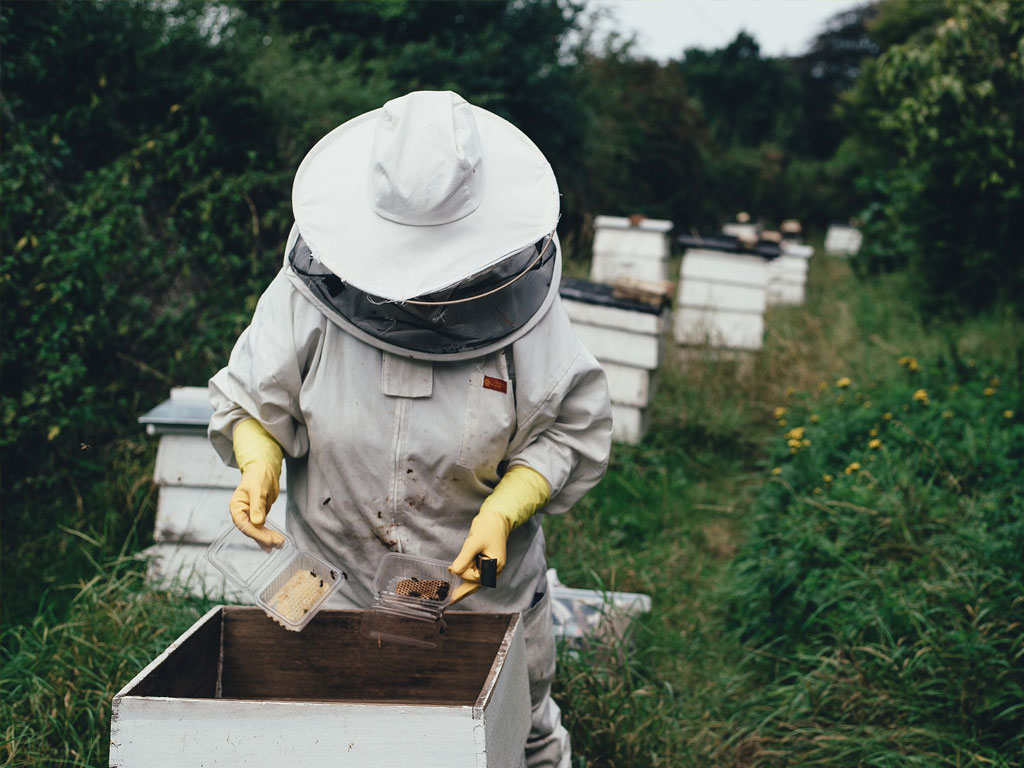
Propolis is a resinous substance of yellow-green to brown or dark red color. If it is stored for a longer time, it becomes darker, and under the sun’s influence, it loses its plasticity. At temperatures above 30°C, it is a soft, sticky mass, and below 15°C, it is brittle and firm. It crumbles when broken. It has a characteristic resinous odor and a bitter taste, and is dense and inhomogeneous in structure.
Its relative density is above 1.0 (1,112-1,136, average 1,127), it melts at 80-105 ° C, but due to the presence of several components, there is no sharply defined melting point. Various solvents dissolve some of its parts, but none of them dissolve entirely in the cold. It dissolves poorly in hot water. Alcohol dissolves Propolis in the complex 60-70% and is fermented fully (except for mechanical impurities).
The best solubility is achieved when a solvent mixture of ether-alcohol is used; chloroform-alcohol, toluene-alcohol, etc. The solubility of Propolis in various solvents is as follows, in ether at 23°C to 66% and at 34°C to 80%; in ethyl alcohol depending on temperature 50-75%; in water 7-11%; in acetone 20-40%. Solubility depends on temperature and duration of extraction.
Chemical composition of Propolis
Using various solvents and steam distillation, it was determined that Propolis contains up to 30% beeswax, about 20% mechanical impurities, 40-60% resins and balms, 5-10% essential oils, 5-15% tannins, pollen, etc. However, from a chemical point of view, terms such as resins, balms and essential oils are entirely vague if they say nothing about the chemical nature of the constituent components.
The main component of Propolis are flavonoids, but in addition to them, it also contains organic acids, terpenes, aldehydes, esters, alcohol, ethers, minerals, amino acids, and others.
Bee propolis ingredients
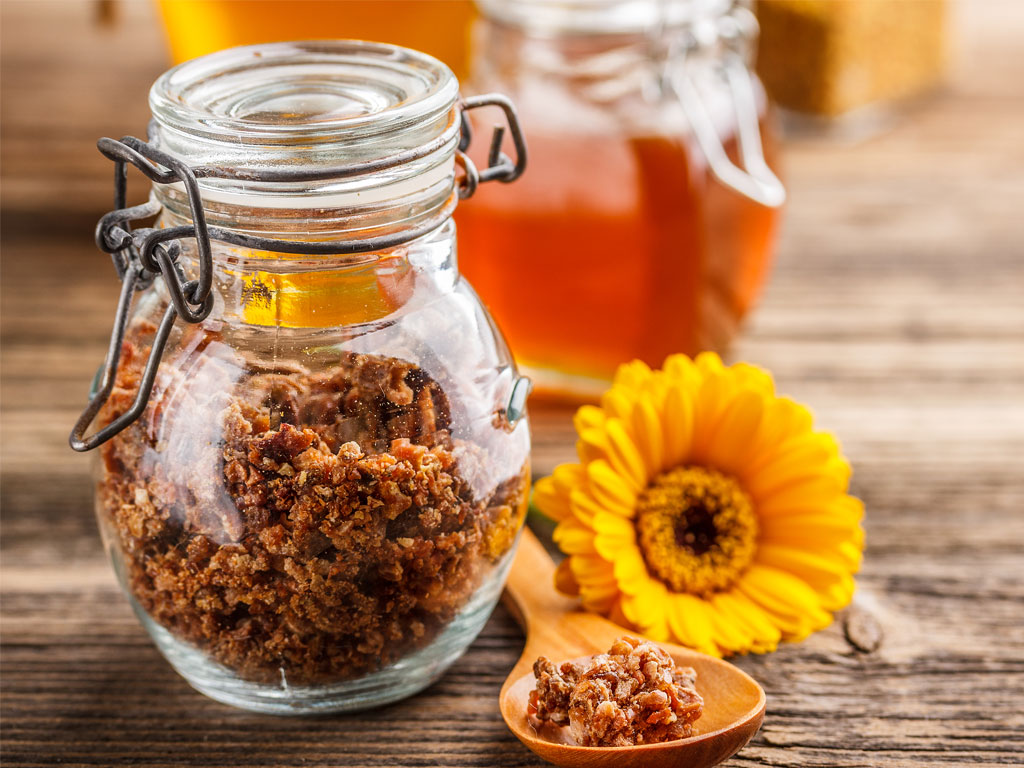
Flavonoids
Flavonoids make up over 25% of all components. Propolis flavonoids are products of flavones (a) and flavanones (b) whose nuclei have replaced some hydrogen atoms with hydroxyl (OH) or methoxy (OCH3) groups. Thus flavonoids in Propolis can be considered as polyphenols and their methyl ethers.
Resin
Many components of Propolis are also found in the resinous substance on the buds of birch and poplar. Since insects do not have a biosynthetic apparatus capable of synthesizing flavonoids, it is clear that the essential parts of Propolis are of plant origin. While in plants, flavonoids are usually in glycosides, in bee resin, they are in the free state. Therefore, the primary plant material is probably exposed to bee enzymes, i.e., the sugar residues are separated, and the flavonoids are broken off in the free state.
Propolis also contains representatives of other groups of organic compounds (Table 1). In addition to the listed compounds, Propolis contains esters, terpenes, pterostilbene, phenolic triglycerides, naphthalene and others. The amount of individual substances varies widely, and some are found only in certain types of Propolis.
Mineral substances
Propolis contains significant amounts of minerals. The presence of manganese, zinc, barium, titanium, copper, tin, nickel, cobalt, vanadium, chromium, lead (from 0 to 11,060 µg / 100 g) was determined, and the elements found were calcium, phosphorus, potassium, sulfur, sodium, chlorine, iron, magnesium, molybdenum, silicon, mercury, selenium, zirconium, aluminum, fluorine and antimony.
Compared to other elements, there is a considerable amount of zinc and manganese.
Natural factors bee propolis
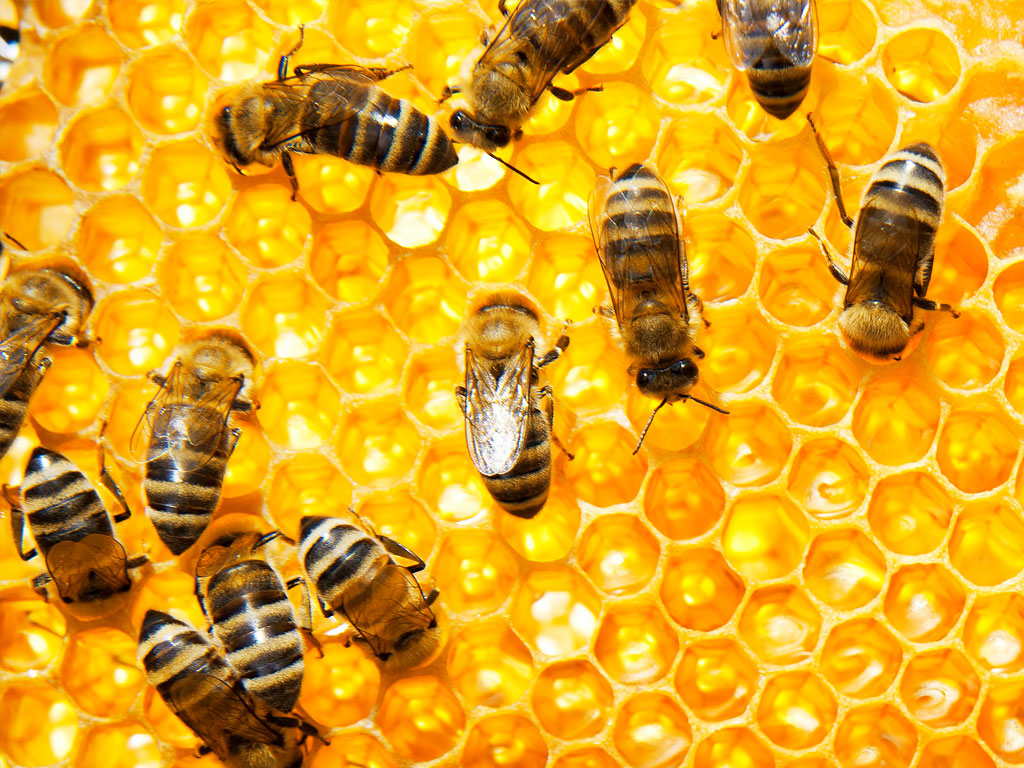
Propolis exhibits a variety of biological properties. It is known to act against microbes, fungi, viruses, inflammation, and has an anesthetic effect, prevents plant growth and seed germination, stimulates tissue regeneration, and increases the body’s immune reactivity.
Different types of microbes are not equally sensitive to Propolis. Gram-positive bacteria are more sensitive compared to gram-negative ones. The bacteriostatic concentration of propolis for gram-positive bacteria is 0.62-2.5 mg / cm3, and for the group of intestinal bacteria (gram-negative microbes) 40 mg / cm3 and more. Bactericidal doses are 2 to 8 times higher than bacteriostatic ones.
It has been determined that different types of bacteria die at other times under the action of Propolis, pastels in 15-20 minutes, the cause of red wind in pigs in 1-2 hours, staphylococci in 2-4 hours, etc. The most resistant are spores, they do not die even after 48 hours.
Storing Propolis for 3-4 years does not reduce its antimicrobial properties. Antimicrobials are thermostable.
An essential property of Propolis is its activity against the tuberculosis bacterium. In addition, Propolis in higher concentrations inhibits the development of many strains of Salmonella pathogenic gram-negative bacteria, causes of parathyroid diseases and harmful infections, strains of Proteus and Pseudomonas aeruginosa, causes of wound infections that are difficult to treat with antibiotics.
Various authors have determined the antimicrobial effect of Propolis on the causative agent of brucellosis, the causative agent of red wind in pigs, some pathogens of bee and brood diseases, etc. Propolis has a weaker effect than antibiotics, but it is less toxic and does not cause resistance in the body. Furthermore, unlike antibiotics, Propolis does not damage the normal intestinal microflora, i.e., does not cause dysbacteriosis.
The antibacterial properties of Propolis come mainly from the action of flavonoids, as well as p-coumaric acid esters and caffeic acid esters. However, these compounds were less effective against microorganisms compared to antibiotics and chemotherapeutic agents. Therefore, ferulic acid, benzoic acid and terpenes should be added to this list of propolis components with antibacterial action.
Propolis has an antifungal effect against various lower fungi, mainly the ones that cause skin and hair diseases. There is a lot of data on its activity against types from the species Trichophyton, Candida, Trychosporon, Achorion shoreline, Epidermophiton, Microsporum.
Given the previous knowledge about the biological activity of the components of Propolis, it is assumed that its antifungal (antimycotic) action comes from pinocembrin and its acetate, p-coumaric acid, ester of caffeic acid, benzoic acid and stilbene.
There is also data on the antiviral effect of Propolis. The antiviral effect of Propolis is thought to come from some of the flavonoids it contains.
The local anesthetic effect of Propolis has long been known. It is believed that it comes from the essential oils in Propolis.
Some authors point out the antioxidant properties of Propolis as a factor in its biological activity.
The availability of Propolis and the recently increased tendency to use it irregularly as a medicine sharply raise the problem of its undesirable side effects. It is generally accepted that it is not toxic.
Recently, there have been more and more reports of allergic reactions caused by Propolis. One study found that out of a total of 2,000 beekeepers, one is hypersensitive to Propolis, and the disease is usually expressed as allergic dermatitis. Propolis allergens are believed to originate mainly from the resinous substances of poplar.
The therapeutic possibilities of Propolis in many diseases have not yet been compared with the healing effect of modern prescribed preparations. This requires reservations about its use in treating conditions that have not been proven to be the best therapeutic agent.
Historical monuments show that Propolis has been used in curative medicine since ancient times. Antimicrobial, anti-inflammatory, anesthetic and trophic properties of Propolis are its pharmacological mechanism of therapeutic effect on inflammation of the mucous membranes of the nose, mouth, coronary cavities, respiratory tract, middle ear, digestive tract, urogenital system and skin.
Propolis successfully treats :
- Sciatica, rheumatism and arthritis, is used as essential supplements to painkillers.
- Atrophic form of chronic pharyngitis.
- Bronchitis, combined use of antibiotics and Propolis.
- The antimicrobial and anti-inflammatory properties of Propolis are manifested in the treatment of chronic purulent otitis media.
- Antimicrobial action of Propolis against the causative agent of tuberculosis.
- Folk medicine is used to treat inflammatory processes in the oral cavity with a solution of bee resin.
- Propolis is recommended as the most suitable means for the treatment of moniliasis in infants.
- Combined preparations of propolis solution and herbal extracts were used topically and orally to treat necrotic stomatitis with wounds.
How to use propolis
Propolis can be used in raw form as an aqueous extract, alcoholic tincture (drops), ointment or cream.
Propolis drops are a tincture of Propolis, or Propolis dissolved in an alcoholic solution. Propolis tincture is usually sold in the form of a spray for more accessible application to the mucous membrane of the throat in inflammation.
There are also propolis drops without alcohol, dissolved in propylene glycol. They are most commonly used in children.
The ointment is prepared using Vaseline, to which 10 to 20 grams of ground propolis is added.


